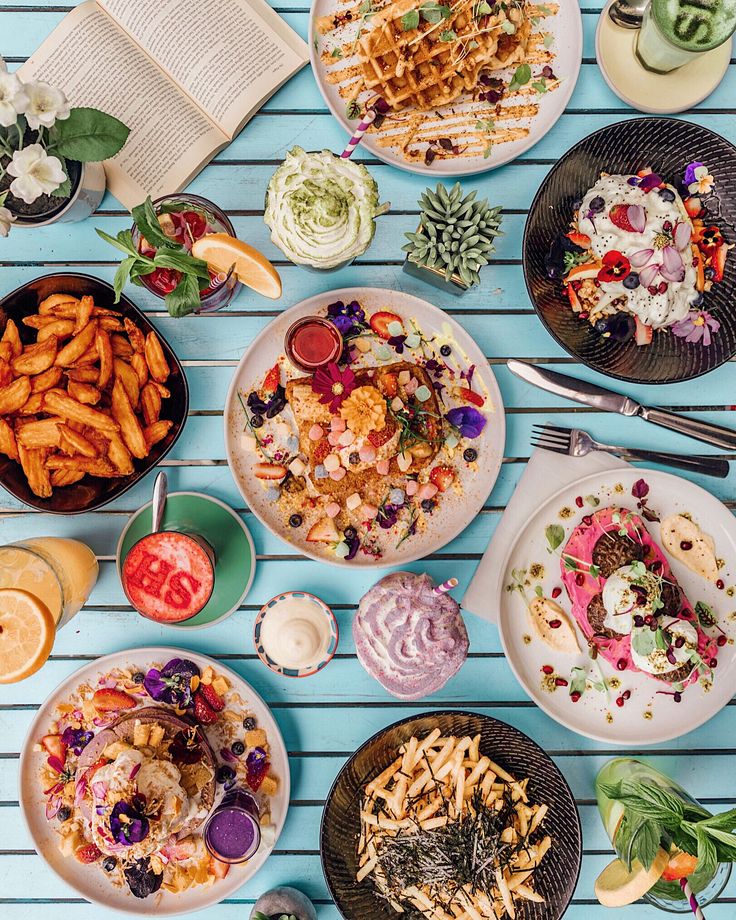Tyler florence baby food
Cooking Baby Food With Chef Tyler Florence
Cooking Baby Food With Chef Tyler Florence
The Art of Cooking Baby Food With Chef Tyler Florence.
If the thought of preparing your own baby food finds you fleeing headlong toward the baby food aisle at your nearest grocer’s, Chef Tyler Florence has you in his sights.
Just as he does with Tyler’s Ultimate on the Food Network, this popular chef is engaging parents with an easy-going instructive style to engender a love for lifelong healthy family eating.
“Because my wife and I cook with our children daily, they get a chance to taste everything. Ever since they were old enough to sit up, we’ve made sure they had a front row seat, banging on the pots and pans on the floor of our kitchen, while we sliced and stirred and sautéed,” writes Tyler in the opening of his latest cookbook, Start Fresh: Your Child’s Jump Start to Lifelong Healthy Eating.
It’s hard to catch up with this southern chef who now calls San Francisco home with his wife, Tolan Clark, and their two children, son Hayden, and daughter Dorothy. In the midst of managing 4 restaurants, 3 specialty stores, a wine label, his own cookware and cutlery line, Tyler launched the popular and new organic baby food line, Sprout, because “we were shocked to realize that most parents expected baby food to taste terrible.”
Not true, says the chef, and in Start Fresh, with lots of instruction and simple directions, Chef Tyler Florence is urging parents to get pureeing and start Cooking Baby Food.
Developing a love of real foods
“Children begin to make conscious decisions about what they like and don’t like from the moment they are born,” says Tyler. “Infants have a heightened ability to detect sweet, bitter, and sour in fact their sense of taste is 10 times as keen as an adult’s.”
Tyler’s goal: from the time an infant tries her first foods she will explore a “world of real, whole foods,” and a variety of different fresh ingredients. All you have to do, says this seasoned chef, “is cook for them.”
Moving toward solids
Pureed foods make the perfect starter foods once a baby is 4 to 6 months old, when breastmilk or formula are still a baby’s main nutrition. Tyler recommends starting with single-ingredient purees, like apples, squash or carrots.
Tyler recommends starting with single-ingredient purees, like apples, squash or carrots.
“At this stage, we’re looking for a super-smooth puree with no pulp or chunks whatsoever,” Florence advises. Begin by steaming, not boiling, foods until they’re soft—to keep nutrients from being thrown out with the pot water as they’re cooked out of the food. Most pediatricians recommend that you introduce one new food a week to ensure your baby’s not allergic.
Next, says Tyler, move to flavor combinations, such as spinach and bananas or green beans and potatoes, or carrots and apples.
As your baby sprouts teeth, so might his love for more texture. Move from pureeing to fork mashing to make dinner more interesting, says Tyler. And as you continue to introduce more solids, don’t forget the importance of family meals, says this chef.
“Studies have shown children who eat together with their families on a regular basis have better language skills, get higher grades, and are less likely to experiment with alcohol and drugs,” cautions Tyler.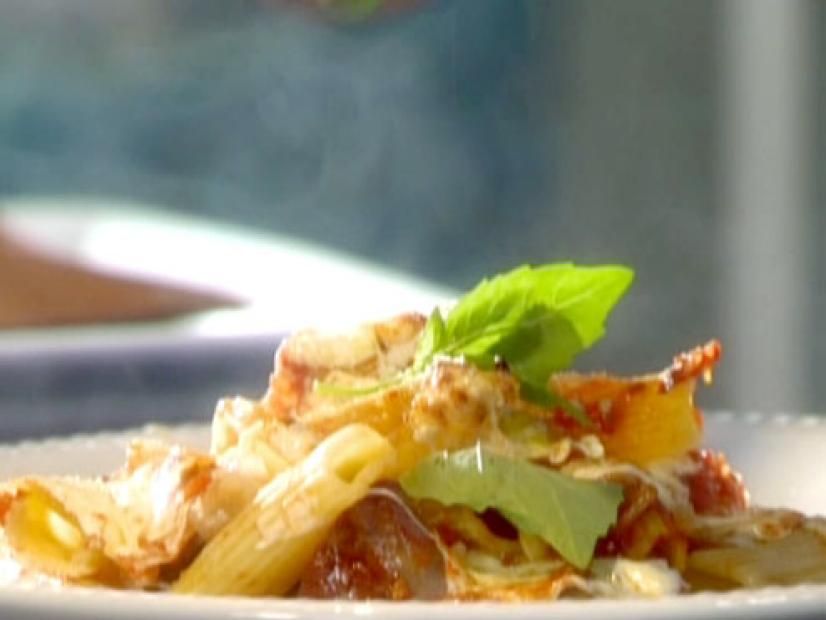 To that end, he offers up new twists on minestrone, sweet potato and blueberry pancakes, sourdough pizza, and butternut squash mac and cheese to please more complex palates.
To that end, he offers up new twists on minestrone, sweet potato and blueberry pancakes, sourdough pizza, and butternut squash mac and cheese to please more complex palates.
Going Green
Along with a love for greens, Start Fresh has a decidedly organic orientation, cautioning parents to avoid plastics in cooking or heating babyfoods. Avoid anything with the plasticizer Bisphenol A (BPA), a known environmental estrogen that disrupts hormones once in the body, in any baby products, including storage bags, plates, bottles, cups and bowls, he says.
“As parents of this new generation, we have a leg up on what our parents knew about health, nutrition and obesity. It’s time to stop making excuses about what we put on our tables and in our children’s bodies and recognize that companies that produce cheap foods are not doing you a favor,” says the chef.
Roasted Applesauce Recipe
Makes 3 cups
Ingredients
6 medium apples, halved lengthwise and cored, peel left on
2 plums, halved lengthwise and pitted
2 tablespoons pure maple syrup
¼ teaspoon ground cinnamon
Pinch grated nutmeg
Directions
Preheat the oven to 400ºF. Line a baking sheet with parchment paper.
Line a baking sheet with parchment paper.
Arrange the apples and plums skin-side down on the baking sheet. Roast until they look as if they have burst, 30-40 minutes. Remove the baking sheet from the oven and let the fruit cool slightly.
In a food processor, combine the roasted fruit, maple syrup, cinnamon and nutmeg and process to the desired consistency.
RELATED TOPICS:
Parenting Against Picky Eating
Introducing Solids: When to transition your baby to solids
Tips on How to Transition Baby to Solids
DIY Baby Food: Economical, Easy and Nutritious
Bottles, Pacifiers & Your Baby’s Oral Health
Picking The Right Bottle For Baby
DIY Baby Food: Economical, Easy and Nutritious
Start Fresh: Your Child's Jump Start to Lifelong Healthy Eating: A Cookbook by Tyler Florence, Hardcover
The Basics
GETTING STARTED
WHAT YOU'LL NEED
Making baby food is easy, so we're not talking about accumulating a lot of unnecessary kitchen equipment. As a matter of fact, you probably already have everything you'll need on hand. Most of the recipes in this book use one of two cooking methods: steaming or roasting. Both are very straightforward techniques that can be accomplished with just a few essential pieces of equipment.
As a matter of fact, you probably already have everything you'll need on hand. Most of the recipes in this book use one of two cooking methods: steaming or roasting. Both are very straightforward techniques that can be accomplished with just a few essential pieces of equipment.
FOR STEAMING
You'll need a large pot with a tight-fitting lid. If you find a pot that comes with its own steamer basket that fits inside, fantastic; if not, you can manage just fine without it--a pasta colander that can sit over the pot or a collapsible steamer insert that fits inside works just as well. A Chinese bamboo steamer with a tight-fitting lid is also amazing for steaming tender vegetables. They are really cheap and they last a really long time. I've had mine for years. So take your pick. And that's it. Pretty simple, right?
FOR ROASTING
Roasting is even easier than steaming. All you'll need are a few baking sheets and your oven. Don't cook on flimsy cookie sheets; go for sturdy rimmed baking sheets. You can pick them up at most kitchen stores or, if you want to go on a field trip, check out a local restaurant supply store. (Look it up online; every town has one.) They will have rimmed baking sheets, which are called sheet pans. Ask for a half-sheet pan, which measures 18 x 13 inches; most home ovens cannot accommodate a full-sheet pan, which is 18 x 26 inches. They will also have everything that makes a restaurant tick. I can spend hours in a restaurant supply shop.
You can pick them up at most kitchen stores or, if you want to go on a field trip, check out a local restaurant supply store. (Look it up online; every town has one.) They will have rimmed baking sheets, which are called sheet pans. Ask for a half-sheet pan, which measures 18 x 13 inches; most home ovens cannot accommodate a full-sheet pan, which is 18 x 26 inches. They will also have everything that makes a restaurant tick. I can spend hours in a restaurant supply shop.
FOR PUREEING
To make supersmooth purees for very young babies starting on solid food for the first time, I prefer a blender to a food processor because it produces a much smoother puree. (If you want to splurge, a high-speed blender does the job best and most quickly of all.) While a food processor can chop foods finely, it doesn't truly puree the way a blender does. Once your baby is ready for purees with a little texture, around when they start getting teeth, you can switch to a food processor and pulse or grind the food to the texture you and your baby prefer, from coarse to fine.
STORING AND REHEATING BABY FOOD SAFELY
Most of the recipes in this book make 6 to 8 child-size servings, which allows you to put several portions in the bank for future meals each time you cook for your baby. Fortunately most purees reheat very well as long as they are stored properly. So how do you keep and reheat food safely? The best way to store baby food in the fridge or freezer is in BPA-free plastic storage containers. Place pureed or fork-mashed foods in a storage container just large enough to hold it and cover tightly; the food can then be refrigerated for one or two days. If you haven't used all the leftovers within about 48 hours, you can freeze anything that remains. Spoon the puree into ice cube trays and freeze until solid, then transfer to freezer- weight plastic bags to store and defrost as needed. (Each cube is equal to about 2 tablespoons.) Be sure to press as much air out of the bag as possible and label the bag with the date and contents. Frozen foods should be used within one month.
To reheat, allow frozen food to defrost overnight in the refrigerator or transfer directly from the freezer to the microwave; never defrost at room temperature, as this can allow harmful bacteria to develop. No plastic containers of any kind should be used when reheating baby food in the microwave; transfer the food to a container made of lead-free porcelain, a glass bowl, or lead-free table china.
Reheat at 50 percent power in 60-second increments, stirring each time to eliminate any hot spots. You can also reheat it in a saucepan over low heat, stirring often to prevent scorching or sticking. In either case, reheat just until warm, not hot, and always test for temperature before offering to your baby.
A note on BPA and something to think about . . .
In the last year or two, a lot of very valuable information about storing food and water in plastics and, most importantly, reheating in plastics has come to light.
Bisphenol A (also called BPA) and phthalates are chemical softeners that make hard plastic soft and moldable. These softening agents are found in everything from plastic wrap and plastic food storage bags to plastic food containers, baby bottles, children's toys, and sippy cups.
These softening agents are found in everything from plastic wrap and plastic food storage bags to plastic food containers, baby bottles, children's toys, and sippy cups.
Bisphenol A has been used in industrial plastic production since the 1930s and is known as an environmental estrogen, which, once ingested, acts as a hormone disrupter. It has been linked to breast cancer, fetal brain developmental issues, obesity, disruption of thyroid function, early puberty (in girls), and increased risk of cancer. In short, nothing you want anywhere near your child's food.
In 2008, a team of scientists from the University of Cincinnati found that when both new and used polycarbonate sport bottles were exposed to boiling water, BPA was released into the water inside the bottle at a level 55 times higher than when the same plastic bottles were exposed to room- temperature water. These findings sent justifiable waves of concern throughout the world, with Canada and the European Union quickly banning the use of BPA in baby bottle production. In 2010, Canada banned all BPA plastic production and classified the chemical as toxic.
In 2010, Canada banned all BPA plastic production and classified the chemical as toxic.
Although the United States has not yet taken sweeping steps to ban the chemical, in March of 2009, bills were introduced in both houses of Congress to ban the use of BPA in all food and beverage containers.
Introduced in the House by Rep. Edward Markey of Massachusetts and in the Senate by Sen. Dianne Feinstein of California, the proposed legislation would ban the sale of any reusable consumer beverage products and containers like baby bottles and sippy cups that contain BPA and prohibit other food and beverage containers, including those for canned foods and formula, that contain the chemical from entering the market.
On BPA plastics, Senator Feinstein writes:
I have been working hard to get BPA out of our food products, but have been blocked by chemical company lobbyists. We have made some progress with some major manufacturers and retailers who have begun to phase out their BPA products.
I'm not going to give up and am currently working to pass legislation that will get this chemical out of our children's products. Moms, dads, grandparents, and other consumers and voters all over the country have written to me asking for BPA to b e removed from their products. We should not use our kids as guinea pigs with a chemical that can seriously harm their immediate and long-term health. I encourage everyone to write to their members of Congress about this issue and continue to look for those companies that are already using BPA alternatives.
At the time of writing Start Fresh in January of 2011, the BPA-Free Kids Act has been reintroduced into Congress by Representative Markey and Senator Feinstein. Let's hope this time it sticks. In the meantime, legislation has been introduced in 30 states across the country to ban BPA plastics locally. Lawmakers are getting pressure from constituents coast to coast to get this chemical out of the marketplace.
But without the protection of US federal laws banning chemicals like BPA, and with international trade bringing products in from all over the world (including areas where environmental laws are lax), we are on our own.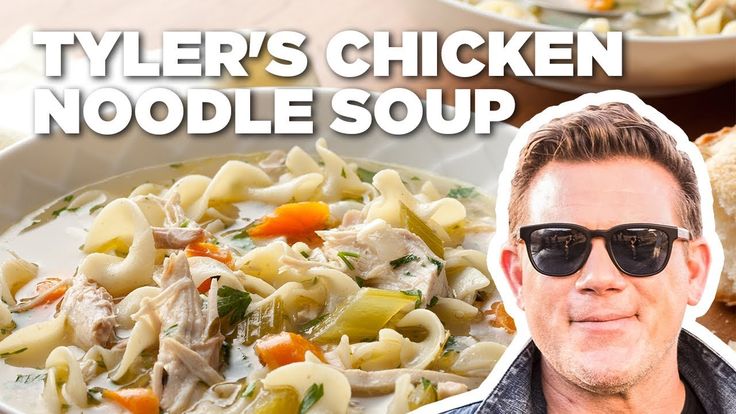 You have to read labels carefully. If a plastic food storage container or sippy cup doesn't say BPA-free, it's not. And it's not worth exposing your child to the possible risks.
You have to read labels carefully. If a plastic food storage container or sippy cup doesn't say BPA-free, it's not. And it's not worth exposing your child to the possible risks.
In the meantime, to reduce the risk of liability, most major baby bottle manufacturers in the United States have implemented self-imposed withdrawals of children's products containing BPA--a solid step in the right direction.
BEFORE THE 12-MONTH MARK IT'S BEST TO KEEP THESE FOODS OFF THE MENU:
. Honey . All cow's milk, pasteurized, unpasteurized, or raw . Unpasteurized juices, such as fresh apple cider . Soft rind, unpasteurized cheeses . Raw eggs (both yolks and whites) . Raw sprouts . Raw or very rare meats . Raw fish . Raw or cooked shellfish (cooked shellfish is OK after 6 months) . Luncheon meats
A FEW QUICK FEEDING RULES
What you don't feed your newborn is just as important as what you do feed him. Most pediatricians agree there are a number of seemingly wholesome foods that should be avoided until a child has reached 12 months, as these foods may contain bacteria or spores that his digestive tract is not yet equipped to handle and could result in some pretty nasty stuff. After the age of 12 months pediatricians generally consider all foods safe, as a child's immune system has developed enough to protect him from harmful bacteria by this stage.
After the age of 12 months pediatricians generally consider all foods safe, as a child's immune system has developed enough to protect him from harmful bacteria by this stage.
I've been consulting with Dr. Alan Greene, author of many great books for parents, about when it's appropriate to start children on certain foods, and I strongly recommend that you use this book as a guide in conjunction with your own pediatrician or family doctor, too. That said, few pediatricians still subscribe to the rule of "One new food per week." Food allergies, though present in only 6 percent of children, do occur. However, it is becoming increasingly clear that early introduction of new foods is actually less likely to cause allergic reactions than waiting until your child is older, and sampling many new foods will help her learn to appreciate a broader range of flavors.
After that, it all comes down to taste trials, and this part is a lot of fun--and maybe a little messy. Most pediatricians consider 4 to 6 months the perfect time to start introducing solid food into your child's diet. (Formula-fed babies may be ready as early as 4 months while breast-fed babies, who are getting more complete nutrition, may be happy with breast milk alone even beyond 6 months.) This is when she's starting to mimic your moves, and thinks peek-a-boo is the greatest game ever invented. She can hold her head up by herself, can sit in a high chair, is able to close her mouth around a spoon, and can move food from the front of her mouth to the back. Also you'll start to notice that formula or breast milk alone doesn't really cut it anymore, as children put on weight rapidly at this stage and constantly need to be satiated. When it's time to move to solid food, it's time.
(Formula-fed babies may be ready as early as 4 months while breast-fed babies, who are getting more complete nutrition, may be happy with breast milk alone even beyond 6 months.) This is when she's starting to mimic your moves, and thinks peek-a-boo is the greatest game ever invented. She can hold her head up by herself, can sit in a high chair, is able to close her mouth around a spoon, and can move food from the front of her mouth to the back. Also you'll start to notice that formula or breast milk alone doesn't really cut it anymore, as children put on weight rapidly at this stage and constantly need to be satiated. When it's time to move to solid food, it's time.
Breast milk, formula, and iron-rich cereals such as rice, barley, and oats should be an important part of their diet during this period, as weight gain helps in the development of the child's immune system. At this point you should just consider solid food a supplemental form of nutrients (after all, "An apple a day keeps the doctor away" is not just an old adage).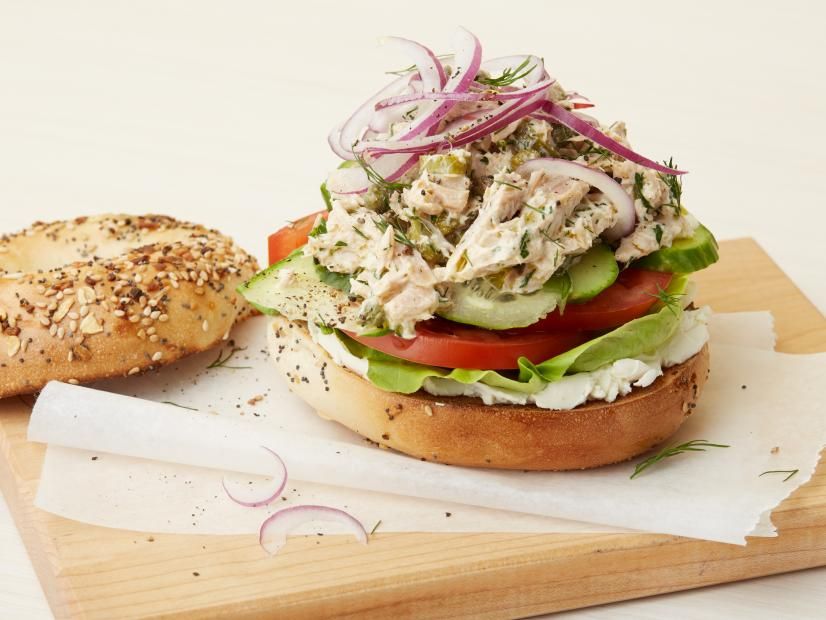 Remember, eating solids will be very new territory. Babies naturally curl their tongues in a suckle motion as they try to suck from a spoon; getting your child to lay his tongue flat as he eats from a spoon will be the first point of business. After a week, he'll get the hang of it and his tongue will start to adapt to this new way of taking in sustenance, allowing him to get more food into his mouth and stomach.
Remember, eating solids will be very new territory. Babies naturally curl their tongues in a suckle motion as they try to suck from a spoon; getting your child to lay his tongue flat as he eats from a spoon will be the first point of business. After a week, he'll get the hang of it and his tongue will start to adapt to this new way of taking in sustenance, allowing him to get more food into his mouth and stomach.
ONE STEP AT A TIME
While there is no limit on how many new foods you can introduce to your baby in a given week or day, offering simple single-ingredient purees at first makes it easier to keep track of what he does or doesn't like.
Don't give up if his first reaction to a new flavor is not entirely enthusiastic. You may have to offer certain foods a few times, with varying degrees of success, to get a sense of which foods can go on the menu permanently--and which are simply nonstarters. Babies have a hyperacute sense of taste, which functions as a defense mechanism against ingesting potentially harmful foods. They naturally reject bitter flavors, because in nature most things that are poisonous are bitter. (Funny how that works.) Sweet is their favorite flavor, as it suggests the pleasing taste of breast milk, the food most likely to ensure their survival. (Again, funny how that works.) I say start with carrots--they're sweet, but deeply nutritious. And always go with organic if possible.
They naturally reject bitter flavors, because in nature most things that are poisonous are bitter. (Funny how that works.) Sweet is their favorite flavor, as it suggests the pleasing taste of breast milk, the food most likely to ensure their survival. (Again, funny how that works.) I say start with carrots--they're sweet, but deeply nutritious. And always go with organic if possible.
Tracking Your Child's Success
When starting on solid food, you'll want a way to track your child's progress. You can photocopy the worksheet on the next page, but a wall calendar or datebook, for you tiger moms out there, will do just fine, too. Just choose something you can take notes on. These notes are very important to share with your pediatrician as you both track the successes and the few inevitable failures of any new foods that are introduced.
NEW FOODS: WEEK __ __ / __
|MON |TUES |WED |THURS |FRI |SAT |SUN | | | | | | | | |
Comments: _______________________________________________________ __________________________________________________________________
NEW FOODS: WEEK __ __ / __
|MON |TUES |WED |THURS |FRI |SAT |SUN | | | | | | | | |
Comments: _______________________________________________________ __________________________________________________________________
NEW FOODS: WEEK __ __ / __
(Continues…)
Excerpted from "Start Fresh"
by .
Copyright © 2011 Tyler Florence.
Excerpted by permission of Potter/Ten Speed/Harmony/Rodale.
All rights reserved. No part of this excerpt may be reproduced or reprinted without permission in writing from the publisher.
Excerpts are provided by Dial-A-Book Inc. solely for the personal use of visitors to this web site.
| |||||||||||||||||||||||||||||||||||||||||||||||||||||||||||||||||||||||||||
HOLIDAY DINNER IDEAS FOR WINE LOVERS
The holidays are the perfect time to gather friends and family and share the love of unforgettable wine and food in a manner that suits your own unique tastes.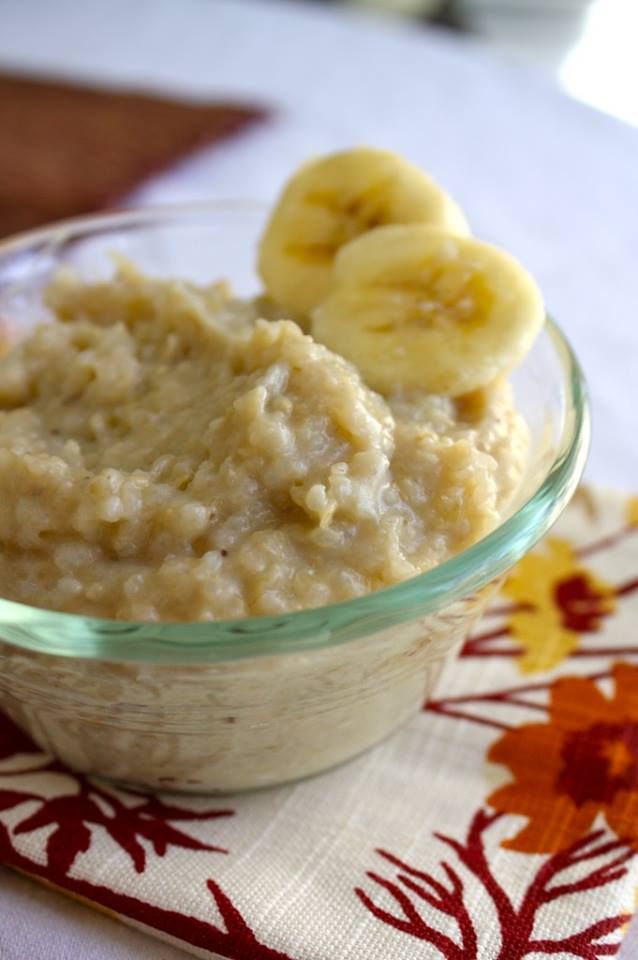 Focusing on the theme will help you stay on track when choosing recipes, drinks, décor, utensils and music - all the ingredients that turn an ordinary dinner into an extraordinary evening.
Focusing on the theme will help you stay on track when choosing recipes, drinks, décor, utensils and music - all the ingredients that turn an ordinary dinner into an extraordinary evening.
Consider your personal sense of style and the items you already have when choosing a theme for your party. Are you avant-garde and modern, artistic and eclectic, or caring and nostalgic?
If your dishes look like they belong in the Museum of Modern Art and you're always first in line at the Apple Store, then Fun Modern is the theme for you.
If you like the fresh style of 1960s San Francisco and the modern organic food movement, then you are more than Boho Holidays typ.
If you think warm casserole or simmering stew is the best way to relieve stress, then you'll love Rattle these pots and pans theme.
Whatever your choice, each of these parties will make your celebration stand out.
Fun Modern
It's hard to keep up a conversation when everyone is on their smartphone, so load up the table with your gadgets for a high tech feast.
Strategically placed tablets (eg iPad, Kindle Fire HD, etc.) can place a wine region slideshow or a video of you preparing dinner. Deconstructed or molecular cuisine will shine on plates with clean, modern lines.
Induction plate processing is the highest level of home cooking with the latest technology. Electric corkscrews, pepper grinders and cheese graters will keep your free hands busy until it's time to post a picture of the pie on Pinterest.
Menu
Molecular gastronomy for the home cook can be easier than you think. Tyler Florence Fresh * (Clarkson Potter, 2012) categorizes dishes by main ingredients and provides instructions for making pearls and sous vide. Modernist Kitchen at Home ** (The Cooking Lab, 2012) by Nathan Myhrvold and Maxim Bilet perhaps offers a comprehensive text on technical cooking at home. It contains practical tips and trendy recipes that you can create in your kitchen.
White Cheddar Gouger *
Tossed Green Lettuce
Peeled Carrot, Pink Yogurt, Fenugreek, Pomegranate & Mint *
Organic Chicken, Israeli Couscous & Basil Broth *
Paella del Bosco, Pressure Cooked **
Pistachio Ice Cream **
Sous-Vide Lemon Curd **
Off Menu
Peeled Carrots, Pink Yogurt, Fenugreek, Pomegranate & Mint
Recipe adapted from Tyler Florence Fresh Tyler Florence (Clarkson Potter, 2012)
1 cup 2% plain Greek yogurt
1 tablespoon orange blossom honey
1 tablespoon rose water
1 teaspoon fresh lemon juice
½ teaspoon ground fenugreek to taste
Kosher salt to taste
6 red, yellow and/or orange carrots, peeled and cut into long thin strips using a mandolin
2 tablespoons crushed and lightly toasted pistachios
2 tablespoons fresh mint leaves
¼ cup organic rose petals, for garnish
¼ cup microcilantro, for garnish
Pomegranate Gel Pearls (recipe below)
Make rose yogurt by blending yogurt, honey, rose water, lemon juice in a blender , ½ teaspoon of fenugreek and salt.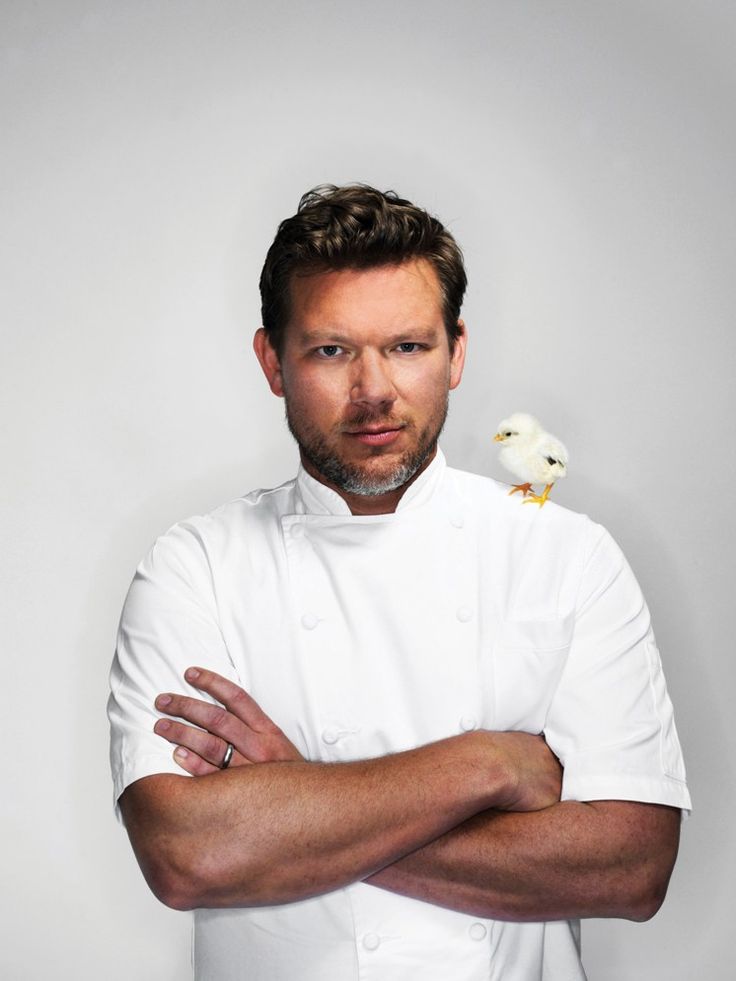 Beat until a layer of foam rises to the top.
Beat until a layer of foam rises to the top.
To finish, place the carrot strips in a large bowl of ice water until crispy and curdled.
Drain the carrots and serve on a plate with pistachios, mint leaves and a little fenugreek. Drizzle the pink yogurt foam with a spoon. Garnish with rose petals, cilantro and pomegranate pearl gel. Serves 4 .
Pomegranate Pearl
2 cups olive oil
½ cup unsweetened 100% pomegranate juice
1¾ teaspoon agar powder
Pour the olive oil into a small glass and place in the freezer to chill for about 30 minutes f.
Bring pomegranate juice and agar agar to a boil in a small saucepan over medium heat. Whisk well to completely dissolve the agar-agar. Remove from heat and refrigerate for 5 minutes.
Fill a large plastic syringe or plastic squeeze bottle with a neatly cut end with the pomegranate juice mixture and carefully drop large drops into the chilled olive oil. As the juice mixture cools in the oil, it forms gelled pearls. Leave the pearls in the oil for a few minutes to harden. When you are ready to use, drain the pearls.
Leave the pearls in the oil for a few minutes to harden. When you are ready to use, drain the pearls.
Organic Chicken, Israeli Couscous, Pesto Broth & Basil
Recipe adapted from Tyler Florence Fresh Tyler Florence (Clarkson Potter, 2012)
wing joint is called an "aviation" incision.
2 boneless chicken breast halves with skin and wings attached
2 sprigs fresh thyme
2 sprigs fresh rosemary
1 lemon, half cut into 5 slices, half juice
Kosher salt and freshly ground black pepper to taste
½ cup extra virgin olive oil plus 2 tablespoons divided
1 lb Israeli couscous
1 tablespoon extra virgin olive oil
4 cups lightly packed fresh basil leaves, plus buds for garnish
1 cup fresh flat parsley
1½ cups finely chopped parmesan-reggiano, divided
1 garlic clove, grated
3 tablespoons unsalted butter
Place the breast halves in individual vacuum-sealed bags and add a sprig of thyme, a sprig of rosemary and 2 slices of lemon to each bag. Season with salt and pepper and add 1 tablespoon of olive oil to each packet. Seal bags and place in a 149°F constant temperature water bath for 1 hour to prepare sous vide (see note). Take the bags out of the water.
Season with salt and pepper and add 1 tablespoon of olive oil to each packet. Seal bags and place in a 149°F constant temperature water bath for 1 hour to prepare sous vide (see note). Take the bags out of the water.
Bring 3 cups of water to a boil in a medium saucepan. Season with salt and a slice of lemon. Then add couscous and cook until soft, about 6-7 minutes. The liquid is not completely absorbed, do not drain.
Combine basil, parsley, 1 cup parmesan reggiano, garlic, juice of half a lemon and ½ cup olive oil in a blender and blend until smooth. Take the chicken out of the vacuum bags and pat dry. Season with salt and pepper. Melt 2 tablespoons butter in a medium saucepan over medium to high heat. Add chicken skin side down and cook until skin is crispy and golden, 3 minutes.
Fold the pesto into warm couscous, it will turn bright green. Season with salt and 1 tablespoon oil. Serve the chicken with couscous and garnish with fresh basil buds and ½ cup Parmesan Reggiano. Serves 2 .
Serves 2 .
Note: For sous vide cooking, professional kitchens use a submersible circulation pump to heat water and keep it at a constant temperature, although this is quite expensive. More inexpensive temperature-controlled ovens (sometimes called water ovens) are available for home use, or you can improvise the same with a large pot of water and an accurate thermometer. Make sure the pot of water is big enough to keep the temperature constant and check the thermometer frequently, if it gets too hot, add ice cubes to bring the temperature down.
Decor
Use simple and comfortable colors: white, black and silver - whatever you need. For crockery, glasses, and cutlery, look for rectangular edges and modern shapes with minimal embellishments. Choose from gray or silver tablecloths, metal placemats and stainless steel chargers. Use small glass or chrome objects as decoration. If table flowers are needed, consider an orchid in a shiny pot, or a single stem in a test tube or glass. Set aside time at the beginning of each course to take a photo of your state of the art kitchen for Facebook and Twitter. For modern lines and technical touches, use Fusion Infinity Wine Glass Set (16 glasses at $199) and Wine Enthusiast Electric Corkscrew ($29.95), both priced at wineenthusiast.com .
Set aside time at the beginning of each course to take a photo of your state of the art kitchen for Facebook and Twitter. For modern lines and technical touches, use Fusion Infinity Wine Glass Set (16 glasses at $199) and Wine Enthusiast Electric Corkscrew ($29.95), both priced at wineenthusiast.com .
Wine List
Focus on the New World for your modern getaway. Look for a lean, clean Sauvignon Blanc or Chardonnay from Chilean producer Cono Sur, whose motto is "No family trees, no dusty bottles, only quality wine." Or head even further south to Argentine's Patagonia region for a pinot noir from the Bodega Chakra wine cellar - the wines may be old, but Patagonia's Rio Negro Valley is one of the country's newest wine regions. If you want to try Shiraz or Cabernet Sauvignon, head to Australia's Barossa Valley for bottles from First Drop, which was a virtual winery until it produced its first vintage of its own in 2011.
Beer and cocktails
You can make cocktails molecular using agar and nitrogen, or simply serve pure triple distilled spirits in transparent glasses with architectural lines. As for beer, take a look at Italy, where breweries like Birra del Borgo and Birrificio Le Baladin offer strong sips.
As for beer, take a look at Italy, where breweries like Birra del Borgo and Birrificio Le Baladin offer strong sips.
Playlist
Look for compilations that emphasize the glamorous modern tone of the evening, such as Hôtel Costes or City Lounge. You can take it one step further with live music from This Is Happening by LCD Soundsystem.
Boho Holidays
Retro is all the rage, as is organic and local food, so celebrate the season with 1960s bohemian style. You can spread the spirit of community by asking each guest to bring a dish, or you can get together to set the table or clean up.
This quirky party encourages socializing, healthy eating, and food and drink sharing away from typical holiday meals.
Menu
Be kind to your animal friends and have a plant-based party. Nava Atlas Crazy for Greens * (Sterling, 2012) offers an almost endless variety of appetizers and entrees using a true cornucopia of leafy vegetables. Harvested Taste: Finding Awesome Ingredients in Your Backyard or Farmer's Market ** (Clarkson Potter, 2012), Tama Matsuoka Wong and Eddie Leroux - A Seasonal Guide to Using Wild Plants at the Table.
Harvested Taste: Finding Awesome Ingredients in Your Backyard or Farmer's Market ** (Clarkson Potter, 2012), Tama Matsuoka Wong and Eddie Leroux - A Seasonal Guide to Using Wild Plants at the Table.
Oven-baked cabbage chips *
Asian greens stewed in wine and mustard *
Caramelized stew ENTHISE with juniper berries **
Bok-choi, glazed with hitsin, with tofu and noodles of dogs *
cream-brown with wild raisins **
outside the menu
9032 902 icy mocking ogizer ogizer. Adapted from Harvested Taste: Finding Awesome Ingredients in a Backyard or Farmer's Market (Clarkson Potter, 2012) Tama Matsuoka Wong with Eddie Leroux 4 Medium Belgian Endives
4 tablespoons unsalted butter
1 tablespoon dried oriental red cedar juniper berries, plus more for serving
1 tablespoon granulated sugar
Salt and freshly ground black pepper, to taste
Preheat oven to 325°F.
Prepare endive by removing the outer leaves and cutting off the hard bases.
Melt butter in a small heavy skillet over medium to low heat, add endive and sprinkle with juniper and sugar. Season with salt and pepper.
Cook, turning the endives carefully after changing color on one side, about 25 minutes or until the outer edges are caramel brown.
Cover the pan with a lid and place in the oven for about 45 minutes. The endives should be a dark chocolate color but still soft and melting. Sprinkle with a pinch of ground juniper before serving. Serves 4.
Hoisin Glazed Bok Choy with Tofu and Soba Noodles
Adapted from Green Crazy: 125 Delicious Vegan Recipes for Kale, Kale, Arugula, Bok Choy, and Other Leafy Vegetables Everyone Loves By Nava Atlas (Sterling, 2012)
It's Quick and the delicious tofu and greens dish with a hint of citrus is delicious even without soba noodles or alternatively serve it with hot boiled grains like rice, millet or quinoa.
1 package (8 ounces) soba noodles
⅓ cup chopped or chopped almonds
1 can (14-16 oz) firm tofu, drained and cut into cubes
2 tablespoons olive oil or other healthy vegetable oil
6 stalks bok choy or 2 baby bok choy, cut diagonally, chopped leaves
12 young quartered carrots or 3 medium carrots, peeled and cut diagonally
2 onions, thinly sliced
2 teaspoons grated fresh ginger or canned ginger
¼ cup hoisin sauce
¼ cup fresh orange juice
1 tablespoon soy sauce or tamari, or to taste
Freshly ground pepper, to taste
Cook noodles according to package instructions until smooth, then strain.
Heat a skillet or large skillet. Add the almonds and toast to a dry skillet over medium heat, stirring frequently, until very light brown. Transfer to a plate and set aside.
Heat oil in the same pan. Add tofu and sauté over medium to high heat until golden brown on all sides, stirring frequently.
Add bok choy, carrots, green onions and ginger. Saute for a minute or two until the bok choy leaves wilt slightly, then add the hoisin sauce and orange juice. Increase heat and cook, stirring, 1-2 minutes. Remove from fire.
Saute for a minute or two until the bok choy leaves wilt slightly, then add the hoisin sauce and orange juice. Increase heat and cook, stirring, 1-2 minutes. Remove from fire.
Add noodles and mix with other ingredients in a skillet. Season with soy sauce and pepper and serve immediately. Serves 4-6 .
Decor
Life was simpler in the 60s and so should your choice of materials. Natural fibers such as raffia or hemp are perfect for the holiday table. Lay down an earthy foundation with rustic doilies and linens, then blast it with an array of colorful doilies, plates and utensils. Live plants, not cut flowers, should be on the hippie holiday table, and bring colorful candles in straw-wrapped Chianti bottles for a fun and fun touch. Small condiment bowls carved out of quartz or jade add 60s energy to the festive table. Create an intimate, earthy atmosphere with Wine Cork Candles ($19.95 for a set of four) and the craft era craze with Wine Cork Serving Tray Set ($39. 95), both priced at wineenthusiast.com .
95), both priced at wineenthusiast.com .
Wine list
Organic, biodynamic and sustainable are the buzzwords for this party, and Californian wines fit the theme well. Stop by Sonoma to see how the Benziger Family Winery produces Cabernet Sauvignon, Pinot Noir, Sauvignon Blanc or Chardonnay grown on biodynamic and organic farms. The Robert Sinskey Vineyards in Napa produce excellent Pinot Noir, Pinot Blanc and Pinot Gris from organic vines. If you're looking to cut down on packaging waste and carbon emissions - and cook for the crowd - stock up on 3-litre boxes of Big House Red or Bota Box Zinfandel.
Beer & Cocktails
Shop organic or small quantities of local spirits such as Crop Organic Vodka or Brooklyn Gin. Use artisanal mixers like the Q Tonic or offer fruit and vegetable juices. While the American craft beer movement is in full swing, look for what's available locally and check out organic beer from Oregon's Deschutes Brewery and Utah's Uinta Brewing to fit the theme.
Playlist
Open an era with songs by Peter, Paul and Mary Bob Dylan, Judy Collins, The Byrds Crosby, Stills, Nash & Young, The Doors and The Mamas and The Papas. End the soundtrack with Ravi Shankar's Indian inspired music.
Rattle these pots and pans
Holidays bring back childhood memories of family home meals. There's no better time to cook good old comfort food, and there's no better way to serve it than straight from a pretty dish. Make "baking at the table" your mantra this season, and remember that the best way to feed your family is family style! Elbows are no place on the table, but your colorful Dutch oven, enamelware, casseroles and pans deserve a place of honor this year.
Menu
Choose dishes that can be served directly on the pan. Rachel Ray My Year in Food * (Atria Books, 2012) is a daily diary of everything the Food Network celebrity cooked and ate during the year, including recipes and serving suggestions. The kitchen is focused on comfort food for the crowd and will look great on a table in brightly colored dishes. Lisa Caponigri What Happened to Sunday Lunch? ** (Sterling Epicure, 2012) features 52 Italian style menus. Be sure to prepare two gorgeous forms for the Sicilian meatloaf (polpettone alla Siciliana) and the pine nut cake (torta di pinoli).
The kitchen is focused on comfort food for the crowd and will look great on a table in brightly colored dishes. Lisa Caponigri What Happened to Sunday Lunch? ** (Sterling Epicure, 2012) features 52 Italian style menus. Be sure to prepare two gorgeous forms for the Sicilian meatloaf (polpettone alla Siciliana) and the pine nut cake (torta di pinoli).
Stew with mushrooms and burgundy *
Chicken pie *
Macaroni and cheese with fennel *
Sicilian meatloaf **
Pine nut pie **
Off menu
Meatloaf Sicilian
Adapted from What happened to Sunday lunch? (Sterling Epicure, 2012) Lisa Caponigri
1 lb pork
1 lb minced veal
1 lb beef fillet
2 large eggs
1 cup breadcrumbs
¼ cup golden raisins
¼ cup pine nuts
2 chopped garlic cloves
Sea salt, to taste
Freshly ground black pepper, to taste
Preheat oven to 350˚F.
Mix all ingredients in a large bowl. Pour the mixture into an 8" x 4" bread pan.
Bake the meatloaf for 1 hour or until browned and crispy. Serves 8-10.
Fennel Macaroni and Cheese
Recipe adapted from My Year in Food Rachel Ray (Atria Books, 2012)
1 tbsp.
1 fennel bulb, chopped and quartered, thinly sliced, with handfuls of leaves reserved and chopped
1 large bulb, quartered and thinly sliced
4 garlic cloves, chopped
Salt and pepper to taste
3 tablespoons all-purpose flour
½ cup dry white wine
1 cup vegetable or chicken stock
2 cups whole milk
Freshly grated nutmeg to taste
1 lb.
1½-2 cups Fontina Val d'Aosta or Gruyère, grated
1 cup grated Grana Padano or Parmigiano Reggiano cheese, divided into pieces, plus a little for topping
Fennel Pollen (optional)
Crispy fried onions, homemade or store bought, for garnish
Preheat oven to 375°F.
For pasta, bring a large pot of water to a boil.
In a medium saucepan or deep skillet, heat the olive oil over medium heat. Add oil. When the oil begins to foam, add the fennel, onion, garlic, salt and pepper to taste. Cover partially and cook, stirring occasionally, for about 20 minutes, until the fennel and onion are light caramel. If the fennel and onion brown too quickly around the edges, reduce the heat.
When the fennel and onion are very soft and sweet, sprinkle with flour and stir for 1 minute. Deglaze the pan with wine. Add broth and milk and cook until thickened, about 5-7 minutes. Season the sauce with salt, pepper and nutmeg to taste.
Salt the pasta water and cook pasta until al dente, about 7 minutes. Drain.
Add fontina and ½ cup Grana Padano to fennel sauce and stir until melted. Mix pasta with sauce.
Pour the pasta mixture into a 9" x 13" baking dish. Top with remaining grated cheese and sprinkle with fennel leaves and fennel pollen (if using). Bake until browned and bubbling, about 10-12 minutes. Top with crispy onions. Serves 6 .
Bake until browned and bubbling, about 10-12 minutes. Top with crispy onions. Serves 6 .
Decor
Let the dishes be your guide when choosing your color palette. Are your cookware copper, high-gloss enamel, stainless steel, cast iron or a mix? Family style can be messy, so ditch the tablecloth in favor of cloth or leather placemats and wood, enamel, or cork coasters for hot pots and pans. Clumsy ceramic utensils look best with a set of serving utensils on the table, while Mason jars or glasses are perfect for beer, cocktails or even wine. Collect the most photogenic serving spoons and spatulas and make sure your potholders are equally presentable. Riedel Stemless "O" Glasses ($24.95 for a set of four) and Mason Jar Glasses ($19.95 for a set of four), both available at wineenthusiast.com , reflect a laid-back and playful evening style.
Wine List
It's comfort food season, so stay in your comfort zone and do what you know. Head to the aisle of your Old World liquor store. Purchase Chardonnay and Pinot Noir from venerable Burgundian houses such as Louis Jadot and Louis Latour. If you're celebrating with some champagne, buy champagne at Moët et Chandon. Italy is the place to try Soave Bolla or Chianti Classico bottled by Antinori or Rocca delle Macìe. From Spain, you won't find more classic than Tempranillo from Muga or R. López de Heredia in Rioja.
Head to the aisle of your Old World liquor store. Purchase Chardonnay and Pinot Noir from venerable Burgundian houses such as Louis Jadot and Louis Latour. If you're celebrating with some champagne, buy champagne at Moët et Chandon. Italy is the place to try Soave Bolla or Chianti Classico bottled by Antinori or Rocca delle Macìe. From Spain, you won't find more classic than Tempranillo from Muga or R. López de Heredia in Rioja.
Beer & Cocktails
Old School Mix: Serve your guests a selection of classic cocktails like Old Fashioned, Martini or Manhattan, or find Grandma's punch bowl and fill it with eggnog. The acidity of the Belgian lambic pairs beautifully with an intense stew, reducing the weight of the dish.
Playlist
You're updating classics in the kitchen, so why not do the same with music? Tony Bennett's "Duets II", Queen Latifah's "Trav'lin' Light" and Diana Ross' "Blue Album" all pair beautifully with originals by Frank Sinatra, Ella Fitzgerald and Mel Torme.

 ru/kids/katerina_agronik_kto_skazal_chto_mango_eto_ploho-15784/
ru/kids/katerina_agronik_kto_skazal_chto_mango_eto_ploho-15784/  Secondly, a certain gas is introduced there so that the space between the puree and the rest of the jar does not oxidize. And the food turns out to be ugly, dim, inanimate. And I am a professional culinary specialist, it was very difficult for me to mentally get used to the fact that I would feed my child with something khaki. At the same time, one must understand that I have nothing against those mothers who feed their children from a can. If my child didn’t mind, I probably would sometimes resort to banks, but she categorically refused. And we took a different path.
Secondly, a certain gas is introduced there so that the space between the puree and the rest of the jar does not oxidize. And the food turns out to be ugly, dim, inanimate. And I am a professional culinary specialist, it was very difficult for me to mentally get used to the fact that I would feed my child with something khaki. At the same time, one must understand that I have nothing against those mothers who feed their children from a can. If my child didn’t mind, I probably would sometimes resort to banks, but she categorically refused. And we took a different path.  After all, there are children who eat only breast milk for a long time, others on a mixed diet, and still others are artificial. Everyone at different ages has an interest in food, teeth grow - in general, everything is purely individual. Therefore, at the heart of my approach is attention to each individual child.
After all, there are children who eat only breast milk for a long time, others on a mixed diet, and still others are artificial. Everyone at different ages has an interest in food, teeth grow - in general, everything is purely individual. Therefore, at the heart of my approach is attention to each individual child. 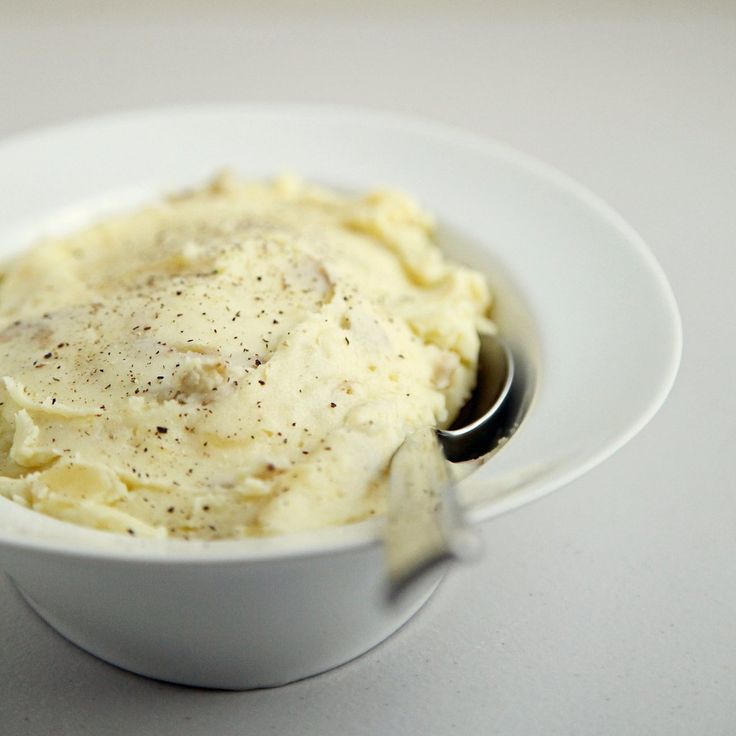 And this, it seems to me, is much easier than continuing to feed some mashed potatoes.
And this, it seems to me, is much easier than continuing to feed some mashed potatoes. 


 From the point of view of allergies, it is neutral, from the point of view of vitamins, it is useful. Or sweet potato, which in texture resembles our potatoes, but potatoes are very poor in vitamins, these are just calories, and sweet potatoes contain C, B, and A, and what not. It is much healthier and tastier. We sell it in stores and not so expensive. Or Jerusalem artichoke is generally a domestic product. But another thing is that it is better to introduce Jerusalem artichoke a little later, because it is more active, there is zinc.
From the point of view of allergies, it is neutral, from the point of view of vitamins, it is useful. Or sweet potato, which in texture resembles our potatoes, but potatoes are very poor in vitamins, these are just calories, and sweet potatoes contain C, B, and A, and what not. It is much healthier and tastier. We sell it in stores and not so expensive. Or Jerusalem artichoke is generally a domestic product. But another thing is that it is better to introduce Jerusalem artichoke a little later, because it is more active, there is zinc.  And secondly, we just already live in the wrong world: somewhere on earth it is always summer and the season. You simply won’t be able to fully trust geography: even what seems to have grown nearby is unknown, in fact, how it was transported, how and how much was stored. In the end, each apple, before giving it to a child, must be tasted for yourself. If it doesn’t taste good, it means that it was plucked green, and then it lay somewhere for months. For example, in winter I will not give my child apricots bought at the market, cherries, sweet cherries - they are like paper, obviously tasteless. I think I can trust myself here.
And secondly, we just already live in the wrong world: somewhere on earth it is always summer and the season. You simply won’t be able to fully trust geography: even what seems to have grown nearby is unknown, in fact, how it was transported, how and how much was stored. In the end, each apple, before giving it to a child, must be tasted for yourself. If it doesn’t taste good, it means that it was plucked green, and then it lay somewhere for months. For example, in winter I will not give my child apricots bought at the market, cherries, sweet cherries - they are like paper, obviously tasteless. I think I can trust myself here.  They reveal the taste of products and help to modify them. For example, you cook rice porridge and throw in a cinnamon stick or half a vanilla pod - it turns out completely differently, much tastier, as if sweeter, although in fact you didn’t add a single gram of sugar.
They reveal the taste of products and help to modify them. For example, you cook rice porridge and throw in a cinnamon stick or half a vanilla pod - it turns out completely differently, much tastier, as if sweeter, although in fact you didn’t add a single gram of sugar.  Just at this age, the child sharply narrows his diet, says: “I will only eat these five foods, I won’t even try everything else.” Well, Wansink says that this behavior is dictated by genetic memory. In the animal kingdom, young large mammals at the age of two or three years are separated from their parents and go to live on their own. It is genetically inherent in the child that he is now responsible for himself, so he chooses unconditionally safe and decides: “I don’t know the rest and don’t want to know, because I’m afraid of poisoning and dying.” It happens at the animal level. And, if, for example, you mix cutlets with mashed potatoes on a plate - even if he is familiar with each one individually, in such a combination the child may refuse to eat them, because contamination has occurred.
Just at this age, the child sharply narrows his diet, says: “I will only eat these five foods, I won’t even try everything else.” Well, Wansink says that this behavior is dictated by genetic memory. In the animal kingdom, young large mammals at the age of two or three years are separated from their parents and go to live on their own. It is genetically inherent in the child that he is now responsible for himself, so he chooses unconditionally safe and decides: “I don’t know the rest and don’t want to know, because I’m afraid of poisoning and dying.” It happens at the animal level. And, if, for example, you mix cutlets with mashed potatoes on a plate - even if he is familiar with each one individually, in such a combination the child may refuse to eat them, because contamination has occurred.  He is let go by an animal fear of poisoning. This, of course, is also very interesting, but that's a completely different story.
He is let go by an animal fear of poisoning. This, of course, is also very interesting, but that's a completely different story. 









